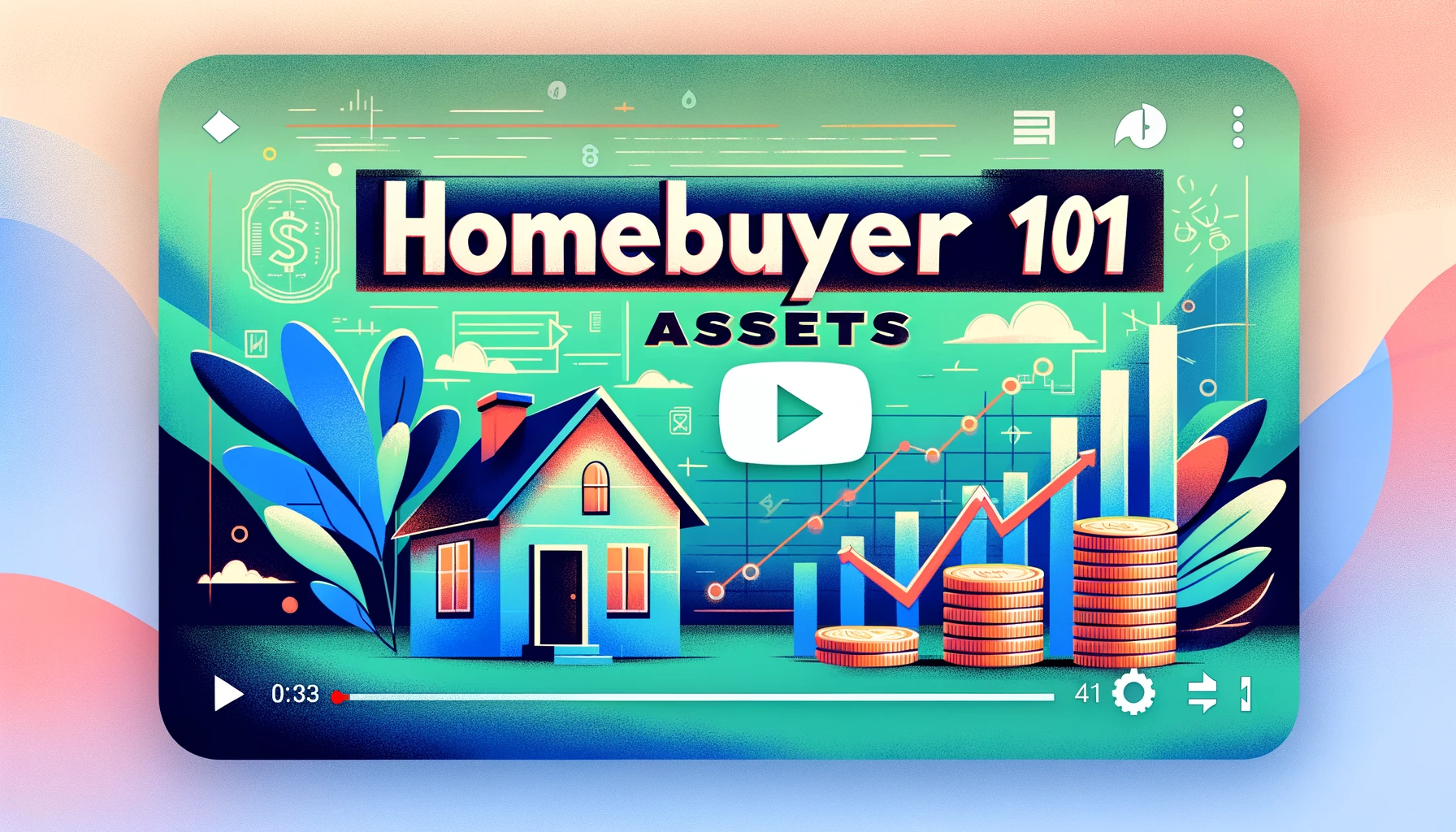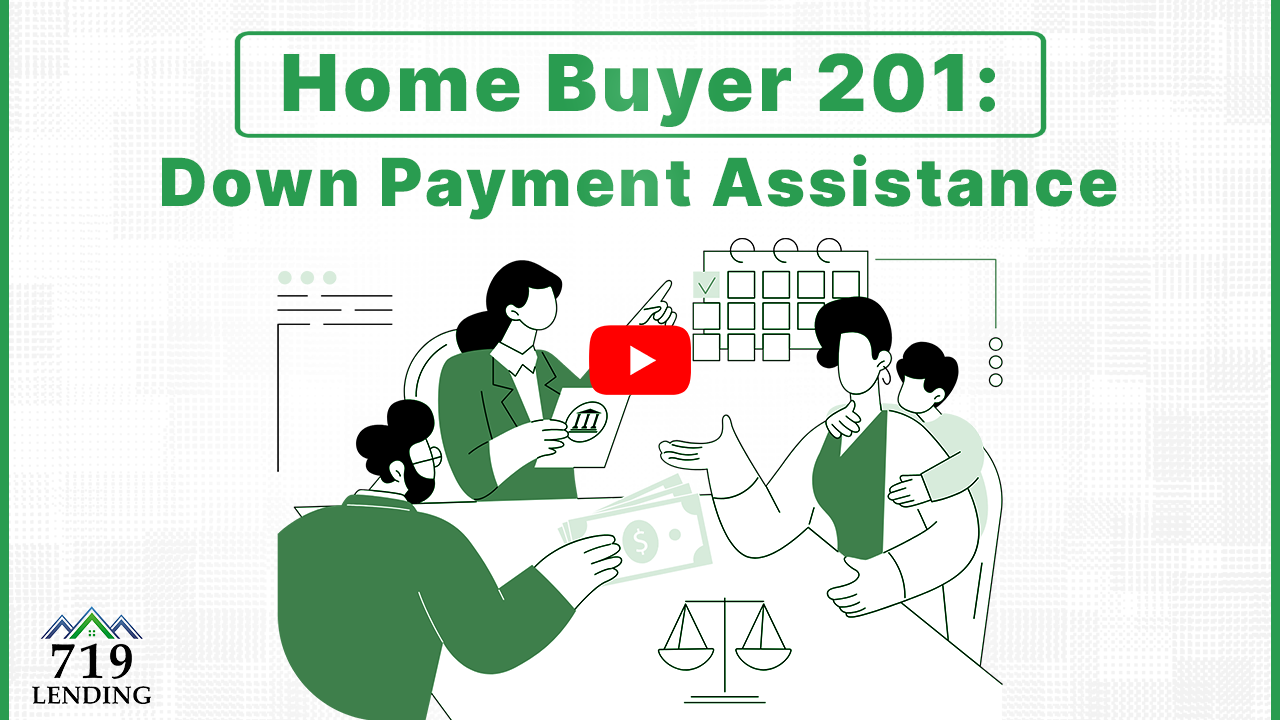6 minute lesson Lesson Summary Importance of timely document submission for your loan Types of…
Homebuyer 101: Loan Terms
Lesson Summary
-
- 30-Year Mortgages
- Lower monthly payments, longer repayment.
- Early payments focus more on interest.
- Long-Term Interest Costs
- More interest paid over time with longer terms.
- Prepayment Flexibility
- Options for additional or lump-sum payments.
- 15-Year Loans
- Higher monthly payments, less total interest.
- Faster equity buildup and ownership.
- 10-Year Mortgages
- Highest monthly payments, quickest ownership.
- Financial Considerations
- Assess budget, income stability, and future goals.
- Custom Loan Terms
- Tailor term length to personal milestones.
- Balance between payments and financial goals.
- 30-Year Mortgages
Choosing the right mortgage term can be daunting, can’t it?
It’s all about striking a balance. Opting for a 30-year fixed mortgage offers the luxury of lower monthly payments, which provides breathing room in your budget. That said, with a shorter loan term, you’d face higher payments, but the reward comes in the form of reduced interest costs and a quicker path to full homeownership.
Understanding 30-Year Mortgages
A 30-year mortgage is a staple in the housing market for a reason—it extends the repayment period over three decades, which serves to dilute the monthly financial burden. Consistent payments over this extended timeline not only offer budgetary relief but also enable long-term planning with predictable housing expenses.
By selecting a 30-year term, you’re embracing what’s known as an “amortization schedule.” This is the roadmap of your loan repayment, where at the start, a larger portion of your payment tackles interest rather than principal. Over time, the script flips, and you gradually chip away more at the principal balance. It’s a marathon, not a sprint, allowing you to achieve homeownership while managing other financial priorities.
Lowest Monthly Payments
The allure of the 30-year mortgage hinges significantly on its provision of the lowest monthly payments against other standard options. This benefit aids in alleviating financial pressure from month-to-month living expenses.
Long-term loans distribute the cost over an extended timeframe, creating a “spread-out” effect. This method minimizes the monthly outlay, fostering a less strained budget and potentially freeing up funds for investments or savings.
A 30-year loan term can significantly ease monthly budgeting for homebuyers.
With the financial ease a 30-year mortgage brings, you seize the opportunity to balance home expenses with other life goals. Yet, it’s pivotal to weigh this with the long-term interest implications—lower payments now could mean a higher total paid over the loan’s life.
Long-Term Interest Implications
Longevity in loan terms directly equates to more interest paid over time. A lengthier repayment period extends the span across which interest accumulates.
For instance, over a 30-year mortgage term, you’ll end up paying a substantial amount in interest, eclipsing the principal loan amount in many cases. This interest premium is the trade-off for more manageable monthly payments and long-term budget predictability.
However, paying less each month means interest has more time to compound. This results in overall higher interest charges when you stretch out repayments over three decades compared to shorter loan terms.
Ultimately, while the monthly outlay is lower, you’ll likely end up paying considerably more in total interest with a 30-year mortgage than you would with a 15 or 10-year term. This long-run perspective is crucial in making an informed decision, especially if you’re looking to optimize total costs and build equity more quickly.
Flexibility in Prepayment
Opting for a lengthier loan doesn’t mean being tied to 30 years of payments.
- Additional Principle Payments: You’re free to pay more towards the principal monthly, shortening your loan term.
- Lump-Sum Payments: Windfalls like bonuses or inheritances can be put towards the mortgage to reduce the balance.
- Biweekly Payments: Accelerates equity building and decreases total interest by making half-payments every two weeks.
- Refinancing Options: Consider refinancing for better rates or terms if finances improve or market conditions are favorable.
Early prepayment can dramatically lessen the interest burden over time.
Remember, the quicker the principal decreases, the less interest accrues, providing long-term savings.
Advantages of 15-Year Loans
When it comes to the virtues of a 15-year loan, the most palpable benefit is the substantial interest savings over the life of the loan. Because you’re borrowing for less time, the total interest paid to the lender is markedly reduced compared to a 30-year term. This can be a wise economic move for those prioritizing long-term financial health. Moreover, with 15-year mortgages typically boasting lower interest rates, borrowers find themselves building home equity at an accelerated pace. It’s an appealing option for disciplined buyers ready to handle higher monthly payments in exchange for a shorter path to outright homeownership.
Savings on Interest Rates
Opting for a shorter loan term can result in significant interest cost reductions over the course of your mortgage.
- Faster Equity Buildup: Shorter loan terms amplify the rate of equity accumulation in your home.
- Overall Interest Savings: Less time financing means less total interest paid to the lender.
- Lower Lifetime Loan Cost: The cumulative amount paid over the loan term is considerably lower.
- Quicker Freehold Transition: Paying off your mortgage faster translates into becoming a full homeowner sooner.
These savings are linked to the inherently lower interest rates allotted to shorter mortgage terms.
Lower interest accumulates over a 15-year mortgage compared to a 30-year term, even with higher monthly payments.
Accelerated Equity Buildup
Accelerated equity buildup is a strategic advantage for homebuyers keen on maximizing their investment quickly.
- Condensed Payment Schedule: Shortening the mortgage term increases the portion of each payment going toward principal.
- Minimized Interest Payments: Less time borrowing equates to less interest accrued over the loan’s lifetime.
- Enhanced Market Leverage: Greater equity offers more borrowing power against the home for future financial needs.
- Wealth Accumulation: As equity grows, so does your personal net worth, bolstering financial security.
By opting for shorter loan terms, homeowners can drastically reduce the time it takes to gain significant equity.
Choosing this path is ideal for buyers who envision using their home’s equity as a springboard for their financial goals.
Higher Monthly Commitment
Opting for a 15-year mortgage means a tighter monthly budget, due to significantly higher payment requirements. This can constrain discretionary spending and necessitate tighter financial management.
The increased outlay each month is mandatory, adding pressure to your regular finances.
However, this fiscal discipline can effectively enforce savings, funneling money into home equity rather than expendable purchases.
A 15-year term obliges you to quickly build equity, benefiting from the rapid accumulation but at the cost of higher monthly sacrifices.
Those who value financial freedom may find the inflexibility of a higher monthly commitment quite daunting, especially if unexpected expenses arise or income fluctuates.
Nevertheless, the reward for this higher payment is tangible – ownership of your home in half the time, slicing through interest charges aggressively.
Selecting a 10-Year Mortgage
A 10-year mortgage catapults you towards outright ownership, demanding an even greater financial commitment each month. With the highest payments relative to longer-term options, it’s a path for the financially robust.
While daunting, the 10-year term offers a substantial interest rate reprieve, translating to less money spent on interest over the loan’s life. This choice is a powerful stride towards rapid equity building and financial liberation, but it requires unwavering economic stability.
Consider a 10-year mortgage as an accelerated journey to a debt-free life, epitomized by financial discipline and substantial monthly contributions to your future.
Fastest Ownership Path
Selecting a shorter loan term accelerates the journey to homeownership, significantly reducing the time it takes to claim full ownership of your property.
Choosing a 15-year term over a 30-year mortgage could potentially halve the timeframe for paying off your home loan. While the monthly payments are higher, you’ll benefit from less interest over the loan’s life—which can result in substantial savings. This approach is ideal for buyers with stable, substantial incomes who desire a faster path to outright ownership.
Alternatively, a 10-year mortgage term offers the swiftest route to owning your home free and clear. The monthly payments are notably steeper, but the financial benefits, including minimum interest paid and maximum equity gain, are strikingly advantageous.
For those intent on the quickest ownership path, a custom mortgage term could align with specific financial goals or milestones. Tailoring the length of the loan to fit your unique timeline may result in a singular roadmap to homeownership—combining the advantages of traditional mortgages with personalized financial planning.
Financial Feasibility Check
When considering loan terms, assess your budgetary flexibility first, ensuring payments align with financial stability and future goals. This preemptive check could head off potential financial strain.
Verify your income’s reliability when evaluating a shorter loan term. Stability and predictability are crucial to sustaining higher monthly payments.
Remember, shorter loan terms mean larger monthly outlays that must fit comfortably into your budget. An unexpected job loss or medical emergency can quickly become overwhelming.
Factor in future financial objectives like retirement savings, college funds, and emergency reserves when choosing your loan’s length. These goals needn’t be compromised by home financing decisions.
Think about the possibility of unexpected life events affecting your income. It’s wise to have a buffer when committing to higher payments that accompany shorter loan terms.
Lastly, always remember that your home is an investment. Balancing aggressive loan payments with the potential for property value appreciation is a strategic consideration.
Customizing Your Loan Term
While a 30-year term offers comfort with its lower payments, and a 15-year beats down interest with gusto, there’s room for tailored terms in your mortgage planning. Opting for a custom loan term—say 17 or 21 years—aligns your mortgage endgame with personal milestones, be they retirement, a child’s education, or simply the peace of mind of owning your home outright sooner.
This bespoke approach to mortgage structuring provides a harmonious middle ground, balancing manageable payments with a swifter route to full homeownership. Employing a custom loan term crafts a precise path to debt freedom tailored to your fiscal narrative.
Tailoring to Financial Goals
Your home purchase is not just a lifestyle choice; it’s a significant financial commitment, reflecting your fiscal prudence and foresight into your long-term financial health. A meticulously chosen loan term meshes with varied financial scenarios, accounting for both present affordability and future stability.
Strategically selecting your mortgage term can significantly affect your financial landscape. Consider how different loan terms could impact your budget and savings plans.
A mortgage isn’t just a path to homeownership; it’s also an instrument for financial planning, potentially shaping your wealth accumulation strategy and retirement timeline.
While pondering your mortgage term, reflect on your risk tolerance, liquidity needs, and potential investment opportunities or life events that may arise during the mortgage period.
Choosing a flexible loan term allows you to adapt payments to fluctuating income levels, ensuring a comfortable cushion for life’s unpredictable financial turns.
Ultimately, aligning your mortgage term with your financial objectives fosters a sense of control. Smart loan term selection amplifies your ability to navigate economic tides and realize your homeownership dreams on your terms.
How Custom Terms Work
Custom mortgage terms bridge the gap between traditional loan structures and your unique financial goals. These tailored solutions provide a personalized pathway to homeownership, aligning repayment schedules with your long-term objectives.
An adjustable payment plan grants unparalleled flexibility. Navigate life’s financial currents with ease.
Crafting a custom term allows for the harmonization of mortgage commitments with life milestones. Whether it’s retiring debt-free or aligning your mortgage with career transitions, custom terms offer a bespoke blueprint for financial success.
With custom terms, you’re sculpting your financial future rather than fitting into a preexisting mold. This approach gives you the liberty to decide the exact year you’ll make your final payment, be it to coincide with retirement, your child’s college graduation, or another significant event. Remember, your mortgage should complement your life plan, not dictate it.




